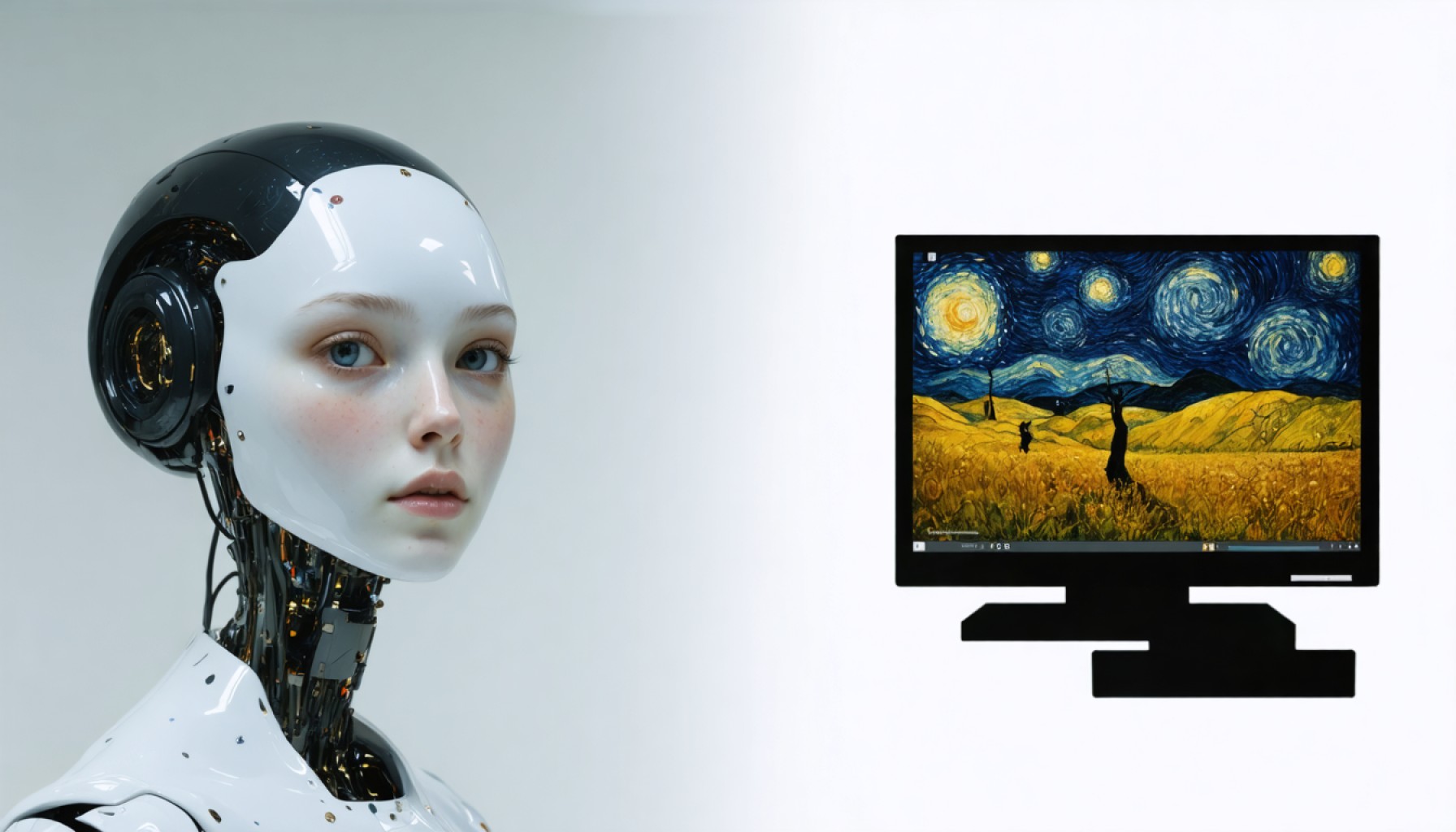- OpenAI introduces “Images in ChatGPT,” blending technology with art through lifelike image generation.
- The feature extends the capabilities of ChatGPT-4o beyond text, incorporating images, sounds, and videos.
- This innovation marks a technological renaissance, significantly impacting the creative industry by offering new forms of artistic expression.
- Images generate without visible watermarks, maintaining authenticity through embedded metadata for transparency.
- The updated ChatGPT version is accessible to both free and premium users, democratizing its advanced capabilities.
- AI reshapes perceptions of art and innovation, intertwining technology and traditional art forms.
In the realm of digital innovation, OpenAI has unveiled a groundbreaking feature that blurs the boundary between technology and art. With the launch of “Images in ChatGPT,” this AI advancement crafts images so lifelike, only the keenest eyes can detect their artificial origins. No longer confined to text, ChatGPT-4o’s omnipotent capabilities extend into images, sounds, and even video, reflecting a harmonious fusion of diverse data types.
OpenAI’s latest feat marks a technological renaissance, and its implications send tremors through the creative industry. Imagine a candid Polaroid-style shot depicting friends in a gritty dive bar, exuding early-2000s nostalgia with muted colors and playful chaos. Or picture the serenity of a horse galloping across an ocean, with every splash and ripple captured in breathtaking detail. These are just glimpses of the mesmerizing possibilities unlocked by the AI’s photorealistic prowess.
Unlike previous versions, images produced by this innovative tool forego visual watermarks, opting instead for embedded metadata, ensuring transparency without compromising authenticity. OpenAI promises metadata markers on all creations, preserving the integrity of authorship.
As user-friendly as it is versatile, the new incarnation of ChatGPT is accessible to both free and premium subscribers. This democratization of cutting-edge technology widens its reach, offering creative power to the masses.
This isn’t merely a technological upgrade; it signifies a shift. While classic art forms thrive on their tangible craftsmanship, AI opens new realms of creativity, challenging our perceptions of artistry and innovation. The central takeaway? In the evolving landscape of creation, technology and art are no longer estranged—they dance intricately together, heralding a future where boundaries are but a memory.
Revolutionizing Creativity: How OpenAI’s ‘Images in ChatGPT’ Transforms Art and Technology
Introduction: A New Era of Digital Art
OpenAI’s introduction of “Images in ChatGPT” has sent ripples through the tech and creative industries, blurring the lines between traditional artistry and digital innovation. With this feature, users can generate hyper-realistic images based on textual descriptions, opening a realm of possibilities for content creators, marketers, designers, and beyond.
Features and Specifications
– Photorealistic Quality: The images generated with this tool exhibit such lifelike detail that distinguishing them from human-made photos can be challenging.
– Metadata Markers: Instead of visible watermarks, each image includes embedded metadata, ensuring authenticity and authorship.
– Accessibility: Both free and premium subscribers of ChatGPT can utilize this feature, promoting equal access to revolutionary tools.
How-To Steps and Life Hacks
1. Content Creation: Leverage the tool for blog posts, social media content, and marketing materials to capture unique visual concepts that previously required extensive resources to create.
2. Educational Tools: Teachers can use the feature to illustrate complex concepts, bridging the gap between textual and visual learning.
3. Design Inspiration: Artists and designers can generate unique visual inputs to spark ideas or find new styles and compositions.
Real-World Use Cases
– Marketing: Advertisers can craft bespoke images tailored to campaigns, capturing the exact mood or theme necessary for their target audience.
– Publishing: Authors can create customized book covers, enhancing visual storytelling and appealing to readers.
– Film and Animation: Producers can visualize scenes or storyboards, reducing the time and resources spent on initial concept sketches.
Industry Trends and Market Forecasts
– Increasing AI Adoption: As AI-generated content becomes more prevalent, industries are expected to integrate such tools into their workflows, allowing for more dynamic and responsive content creation processes.
– Enhanced Personalization: From personalized ads to individual consumer products, AI’s capacity to craft unique images allows for unprecedented levels of customization and engagement.
Controversies and Limitations
– Ethical Concerns: The ability to generate hyper-realistic images raises questions about potential misuse in creating deceptive or malicious content.
– Copyright Issues: Although metadata aids in tracking authorship, the implications for intellectual property rights remain a topic of discussion.
Security and Sustainability
– Data Security: OpenAI emphasizes secure data handling, ensuring that user inputs and creations are protected and not misused.
– Sustainability: The environmental impact of AI computations is a consideration, with efforts underway to optimize energy use and reduce carbon footprints.
Insights and Predictions
As AI continues intersecting with art and media, we can anticipate a shift in how creative processes are perceived and performed. The fusion of AI’s precision with human creativity will likely lead to innovations we can barely predict today.
Actionable Recommendations
– Experimentation: Dive into the tool’s capabilities by experimenting with different styles and themes to discover unexpected results.
– Collaboration: Combine AI-generated content with traditional art forms for a truly hybridized approach to creative projects.
– Stay Informed: Keep abreast of industry discussions regarding the ethical implications of AI in art and engage in community dialogues.
Relevant Links
To stay updated with OpenAI’s latest updates and technological breakthroughs, visit OpenAI.
By embracing these advancements, individuals and industries can navigate the digital revolution thoughtfully and creatively, ensuring a future where technological and artistic expressions are united.
